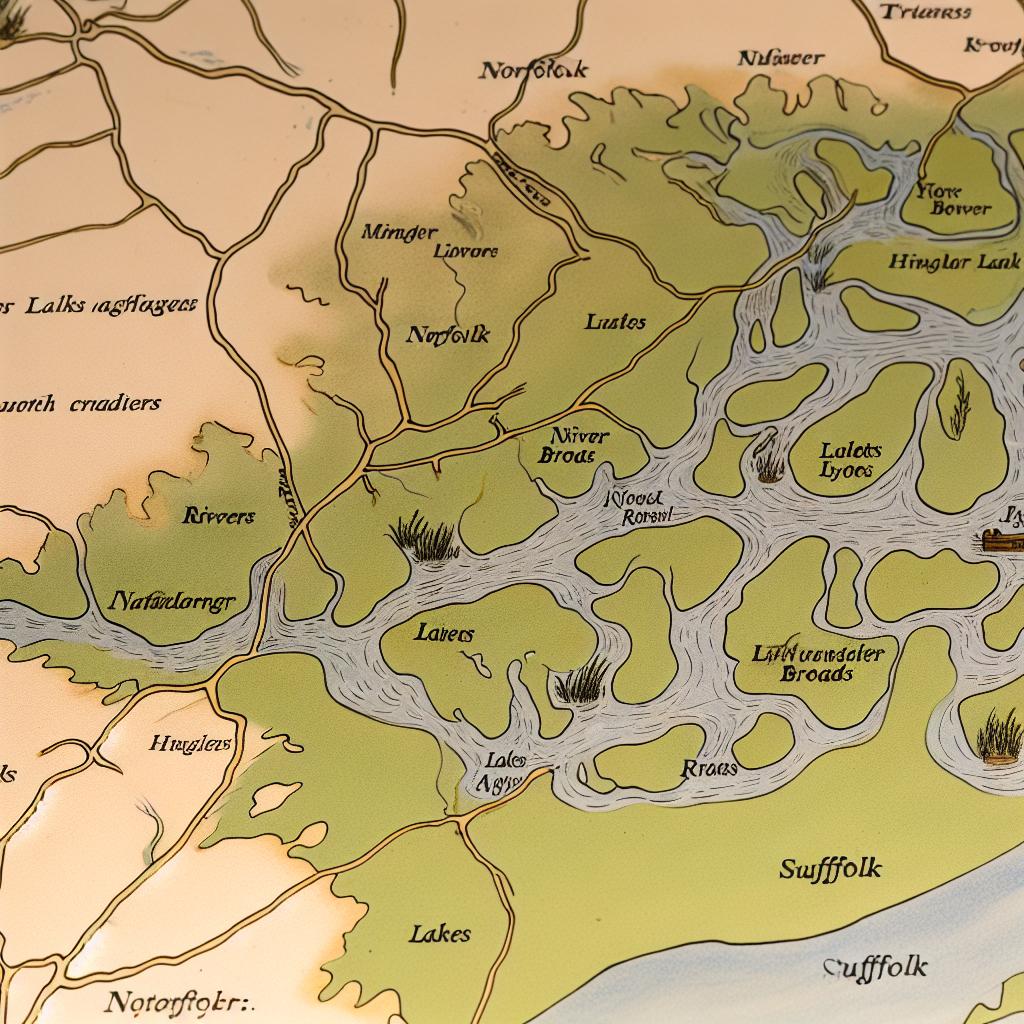Understanding the Norfolk Broads
The Norfolk Broads, located in the enchanting eastern region of England, constitute a distinct network of interconnected rivers and lakes. Forming part of the Broads National Park, this unique landscape is frequently referred to as Britain’s largest protected wetland. The Broads comprise navigable rivers and shallow lakes, offering a remarkable environment that supports diverse wildlife and numerous recreational activities.
Origins of the Norfolk Broads
Understanding the origins of the Norfolk Broads requires delving into historical landscape transformations. The Broads’ landscape took form due to extensive peat excavations initiated during medieval times. Notably, peat was extensively dug out from the land and utilized as a primary source of fuel, especially from the 9th to the 14th century. Over time, the excavated peat pits gradually filled with water, eventually forming the intricate network of lakes and rivers observed today.
Natural or Man-Made?
On first glance, the Norfolk Broads appear to be a natural landscape, exuding an organic and untouched ambiance. However, deeper exploration reveals that these lakes are largely man-made, the result of past human activities. The distinctive process involving peat diggings followed by flooding resulted in the creation of these shallow lakes. This intriguing origin story distinguishes the Broads from those bodies of water that have formed purely through natural processes.
Lakes vs. Rivers in the Broads
A fundamental question often asked is whether the Broads should be classified as lakes or rivers. The answer lies in recognizing that the Norfolk Broads encompass both features. The term “Broads” specifically refers to the expansive, open-water bodies that are reminiscent of lakes. However, these broads are interlinked by an extensive network of navigable rivers. Collectively, they constitute an interconnected system that is vital for regional ecology, tourism, and conservation efforts.
The Role of Rivers
Rivers within the Norfolk Broads, such as the River Bure, River Yare, and River Waveney, play integral roles in the overall hydrological network. Acting as the primary transport arteries, these rivers connect individual broads and facilitate navigation throughout the region. Forming the backbone of the waterway system, the rivers are indispensable for maintaining the area’s ecological balance and supporting local biodiversity.
Navigation and Recreation
The unique intertwining of lakes and rivers throughout the Broads creates an ideal setting for various boating and recreational activities. It is a favored location for scenic river cruises, serene sailing adventures, and peaceful fishing expeditions. Visitors are drawn by the marvelous landscapes and the rich biodiversity present in the Broads. Additional resources and visitor information can be found on the official Broads Tourism website.
Environmental Significance
The ecological significance of the Norfolk Broads cannot be overstated, as the area provides crucial habitat for a diverse array of species, including some that are rare or endangered. Concerns about conservation have prompted efforts to preserve the unique landscape, leading to the designation of the Broads as a national park. Such protective measures aim to ensure the safeguarding of natural resources and the continued biodiversity of the region.
The Ecological Landscape
The Norfolk Broads constitute a rich tapestry of ecological zones. The area supports a broad spectrum of fauna and flora. This diversity is partially attributed to the dynamic environment formed by the merging of aquatic and terrestrial ecosystems. However, the Broads’ ecological value goes beyond its rich biodiversity and also encompasses the services these ecosystems provide, such as flood regulation, carbon storage, and water filtration.
Rare and Endangered Species
The Norfolk Broads serve as a refuge for numerous rare and endangered species. Noteworthy among these are various bird species that rely on this wetland habitat for breeding and nesting. In addition to avian life, the Broads support a variety of aquatic plants and insects, some of which are unique to the region. Preserving these species is a key focus of conservation efforts, aiming to maintain ecological balance and ensure the natural heritage of the Broads remains intact for future generations.
Cultural and Historical Aspects
Beyond its ecological importance, the Norfolk Broads are steeped in cultural and historical significance. The interaction between human societies and this landscape spans centuries, dating back to when communities relied on the extraction of peat for energy needs. These historic activities have left an indelible mark on the topography and character of the region.
Human Influence Over Time
The transformation of the Norfolk Broads is a prime example of how human activities have historically shaped natural environments. Medieval peat extraction, a central human endeavor, is responsible for the creation of the Broads’ network. This long-standing interaction highlights the dynamic relationship between human development and environmental sustainability.
Tourism and Local Economy
In contemporary times, the Norfolk Broads have evolved into a hub for tourism, which plays a significant role in the local economy. The distinctive mix of water-based recreation and historically rich landscapes attract considerable visitor interest. The presence of tourism fuels local businesses, fosters cultural exchange, and supports the regional economy, underscoring the Broads’ importance as a vibrant socio-economic center.
Conclusion
In summary, the Norfolk Broads are a fascinating combination of both lakes and rivers, with their formation traceable to profound human interventions and natural processes unfolding over centuries. This intertwining of history, culture, and ecology makes the Broads a distinctive and vital part of England’s natural landscape. Through continued conservation efforts, the Norfolk Broads stand as a testament to both the resilience and the intricate interdependence found within natural systems, serving as a cherished national park and a site of considerable ecological and historical prowess.
